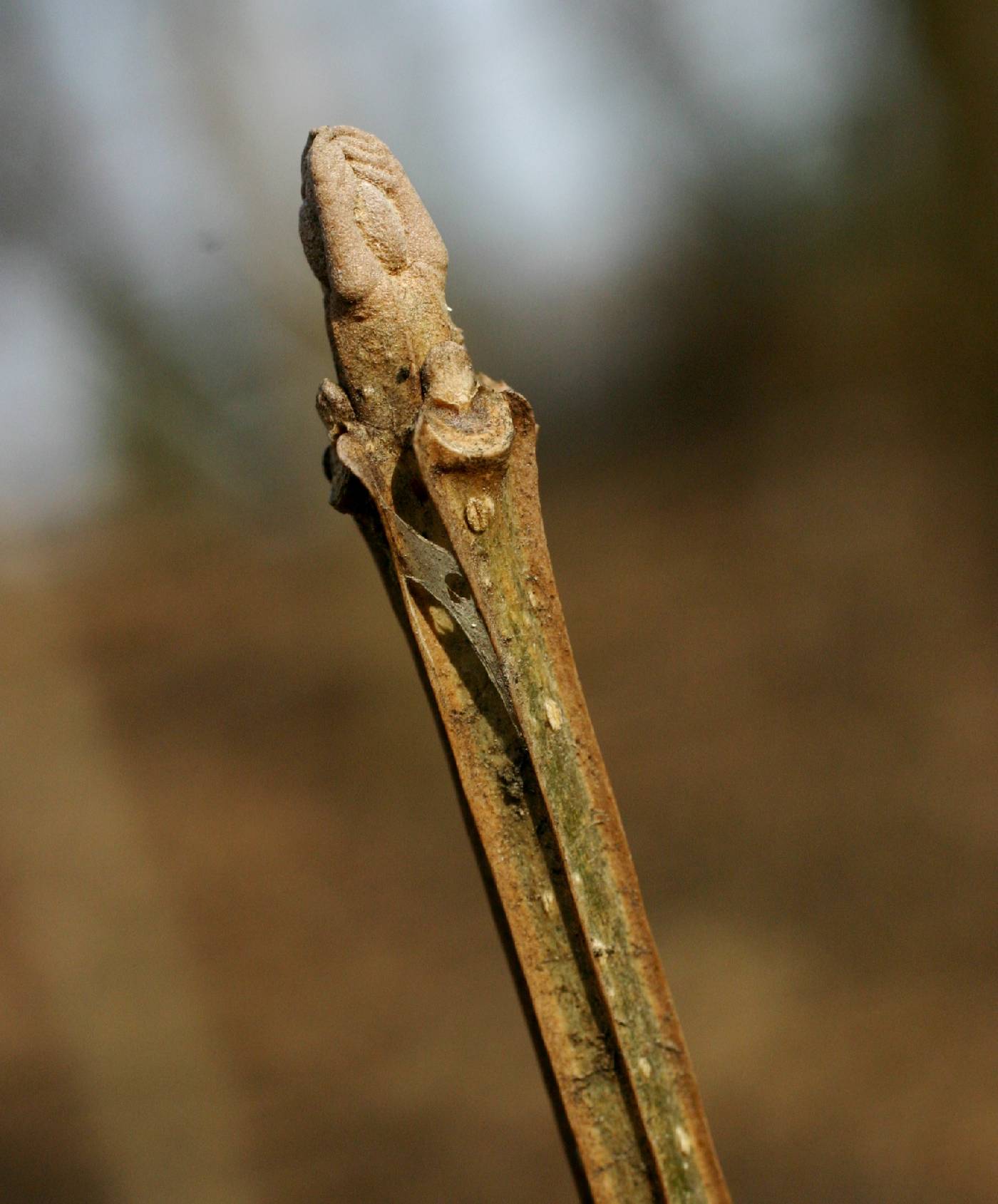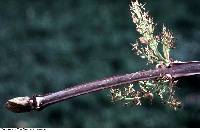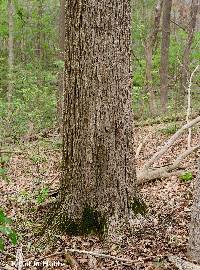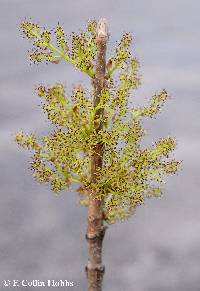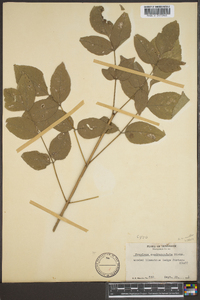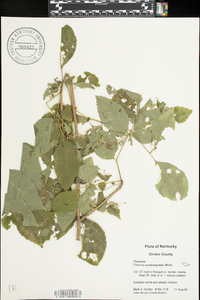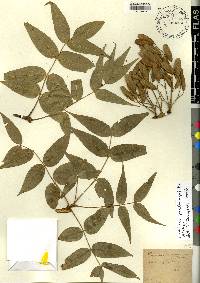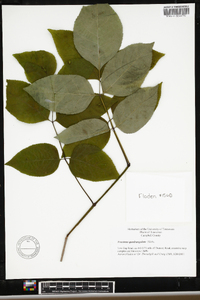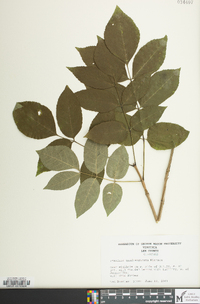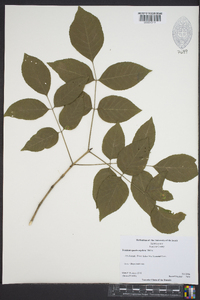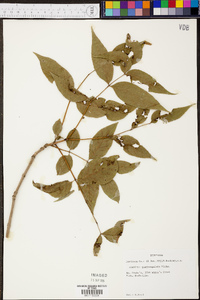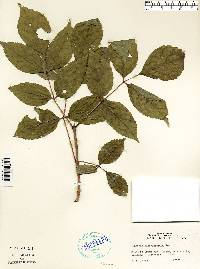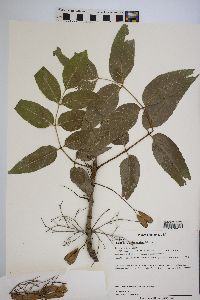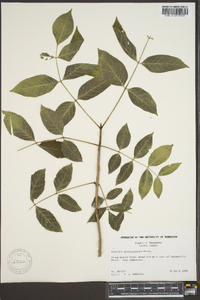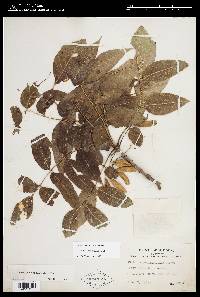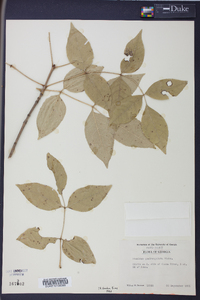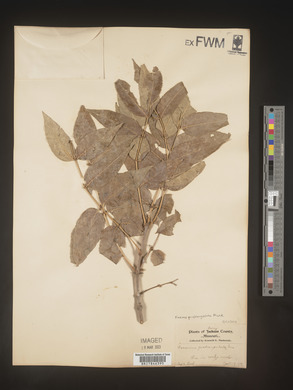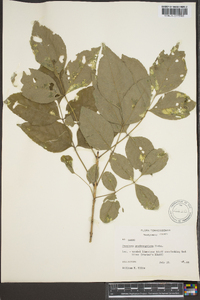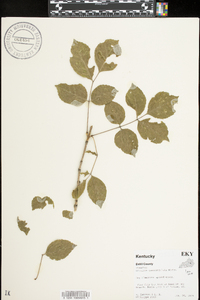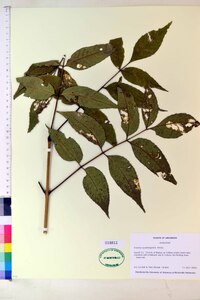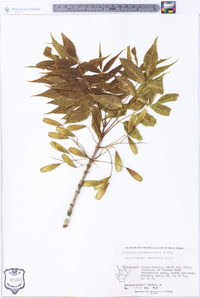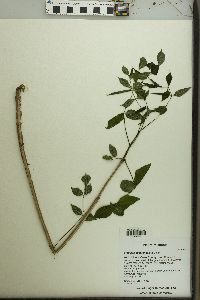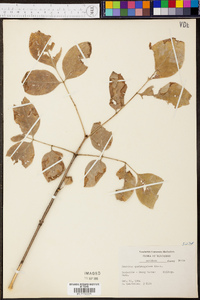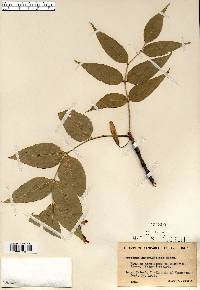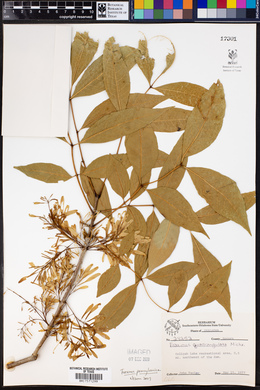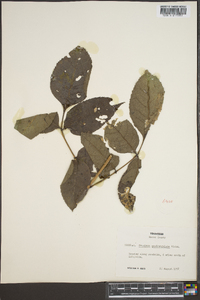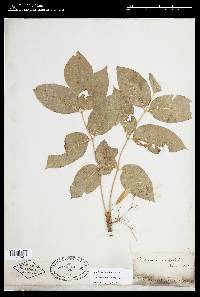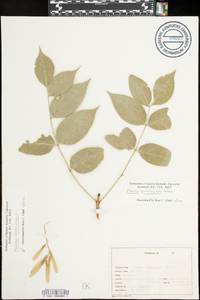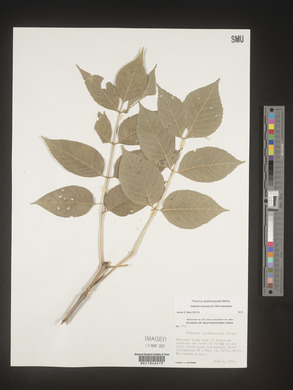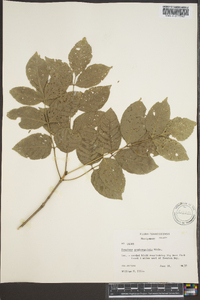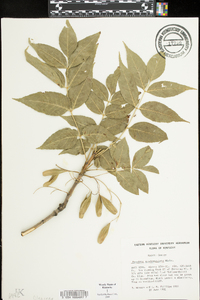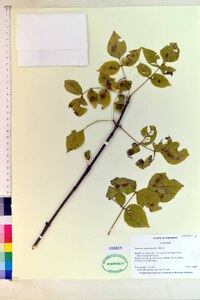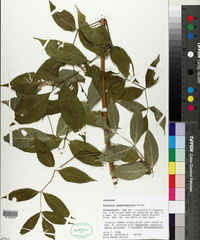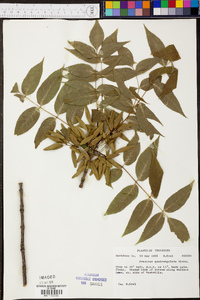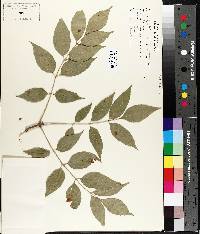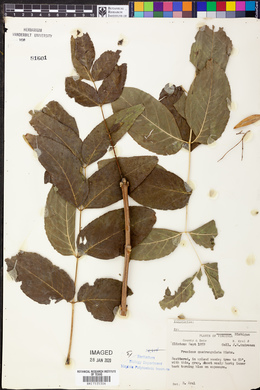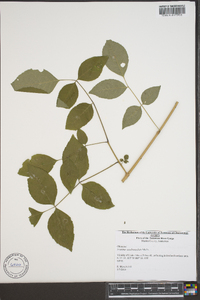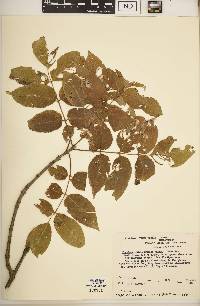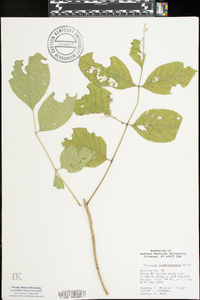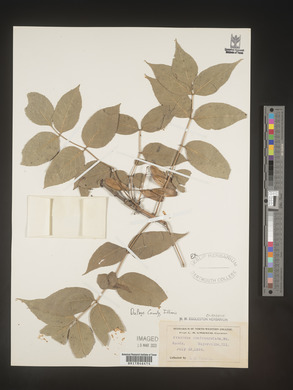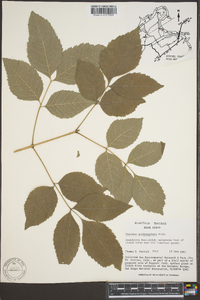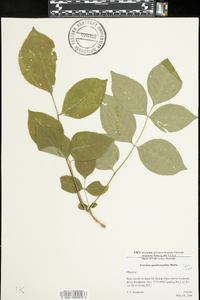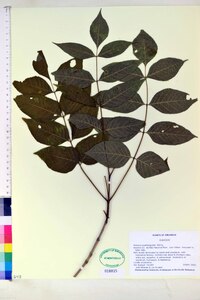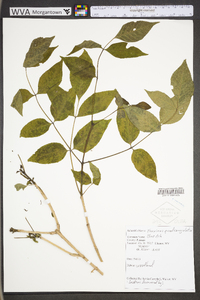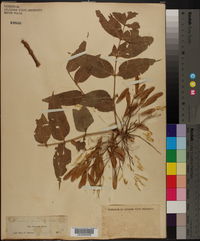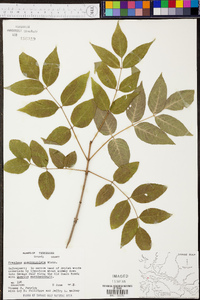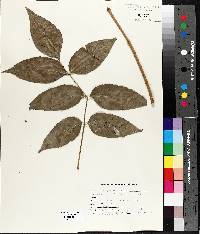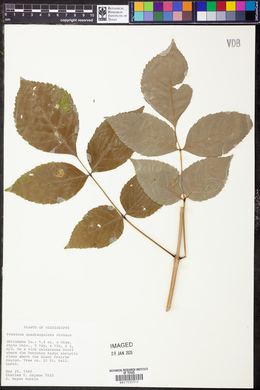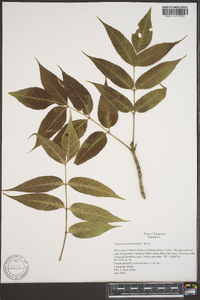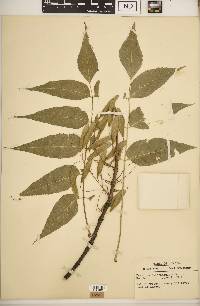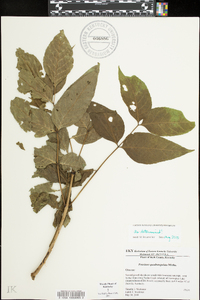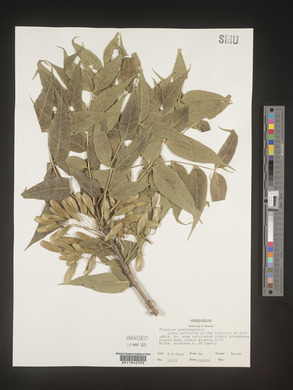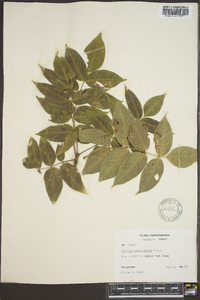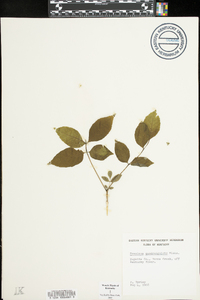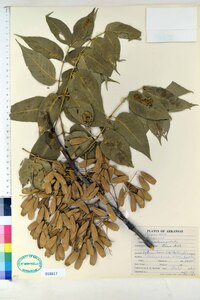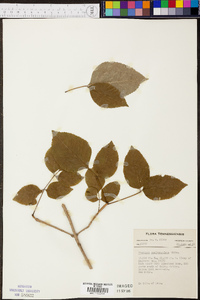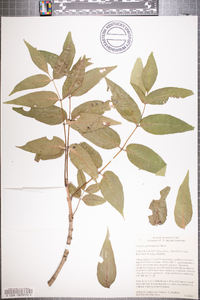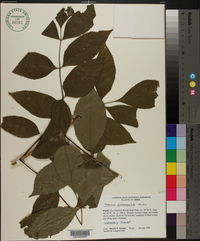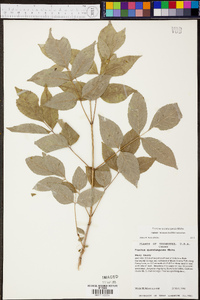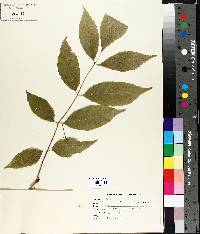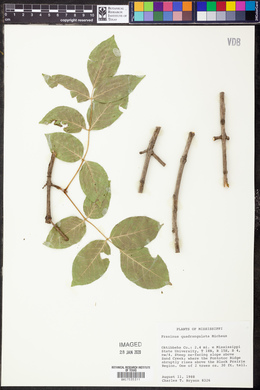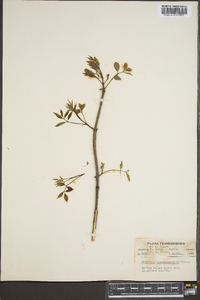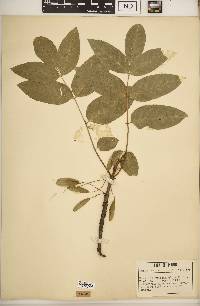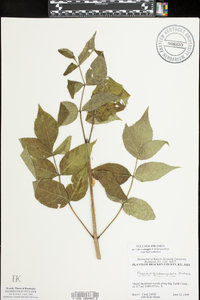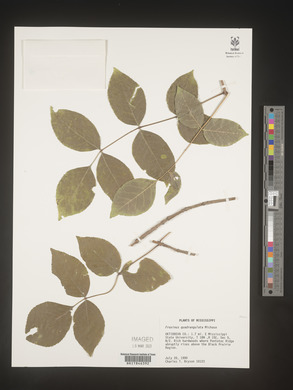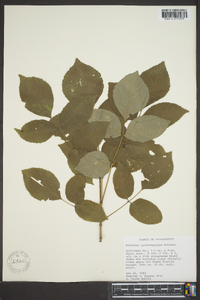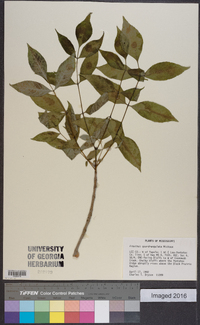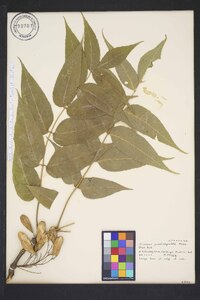Fraxinus quadrangulata
|
|
|
|
Family: Oleaceae
Blue Ash
[Fraxinus quadrangularis Lodd.] |
Small to medium-sized tree 10 - 20 m tall, trunk diameter 30 cm - 0.5 m Leaves: opposite, pinnately compound, 20 - 38 cm long, with five to eleven leaflets (usually seven). Leaflets short-stalked, yellowish green above, paler with tufts of hairs along the veins beneath, 7 - 13 cm long, 2.5 - 5 cm wide, oblong egg-shaped to lance-shaped with a tapering base and long-pointed tip, coarsely toothed, thick, and firm. Leaves turn yellow in autumn. Flowers: borne in a branched inflorescence, purplish, small, and lacking petals. Fruit: dry, single-seeded, winged (samara), 2.5 - 5 cm long, oblong and notched at the tip. Wing broad, often twisted, extending to the base of the flat seed cavity and surrounding it. Bark: light gray tinged with red, moderately thin, and irregularly divided into large, scaly plates that give the trunk a slightly shaggy appearance. Twigs: stout and square, with short, corky ridges extending between the nodes, orangish with rusty hairs, becoming brownish gray and hairless. Leaf scars crescent-shaped, with several bundle scars forming a U. Buds: dark reddish brown, small, rounded, and slightly hairy. Terminal bud 6 - 8 mm long and blunt. Uppermost pair of lateral buds adjacent to the terminal bud at nearly the same level. Form: narrow and rounded with many short, sturdy branches. Similar species: The square stems of Fraxinus quadrangulata immediately distinguishes it from any other ash in the Chicago Region. Flowering: April to mid-May, as leaves begin to unfold Habitat and ecology: Typically found in calcareous woodlands and wet-mesic sites. Occurence in the Chicago region: native Notes: The inner bark of Fraxinus quadrangulata was once soaked in water to produce a blue dye, and its sap will turn blue when exposed to the air. The wood is used for flooring and interior finish, and the tree is sometimes planted as an ornamental. The emerald ash borer (Agrilus planipennis) is a serious insect threat to all native ashes (see link below). Etymology: Fraxinus is the Latin word for ash. Quadrangulata is Latin for "four-angled," which refers to the square twigs. Author: The Morton Arboretum Tree to 30 m, with sharply 4-angled or narrowly 4- winged twigs; lfls 7-11, commonly lanceolate, usually long-acuminate, broadly cuneate to subrotund and usually inequilateral at the petiolulate base; fls perfect; anthers blunt or cleft at the tip; fr flat, elliptic to narrowly oblong-obovate, 2.5-4 cm נ6-10(-12) mm, usually emarginate, the wing extending nearly or quite to the base; cal minute, soon deciduous. Moist woods; s. Ont. to s. Mich., s. Wis., and e. Kans., s. to W.Va., Ga., Ala., and Okla. Gleason, Henry A. & Cronquist, Arthur J. 1991. Manual of vascular plants of northeastern United States and adjacent Canada. lxxv + 910 pp. ©The New York Botanical Garden. All rights reserved. Used by permission. From Flora of Indiana (1940) by Charles C. Deam Found sparingly throughout the state, although we have no records from the northwestern counties. It is generally found on high ground and where its distribution is limited, it is usually restricted to the high banks of streams. ...... Indiana Coefficient of Conservatism: C = 7 Wetland Indicator Status: N/A Deam (1932): This species is becoming too scarce to be of much economic importance. The cut is usually sold as white ash. The fruit and foliage of this species most closely resemble those of the black ash, from which it can be distinguished by its greenish-yellow foliage and the habitat in which it grows. |

